For this article, I interviewed two people who have gardened or farmed in the Aleutian Islands. Lily Stamm manages a geodesic dome greenhouse in Nikolski, Alaska, located on Umnak Island. Two domes were erected in 2003, one of which has since blown away. I also interviewed Michael Livingston, who homesteaded with his family in Cold Bay in the 1960s. You can watch the video of these interviews here. If you are a gardener or grower in the Aleutian and Pribilof Island region and are interested in sharing what you know, or photos and videos of your garden, please contact Heidi Rader at hbrader@alaska.edu.
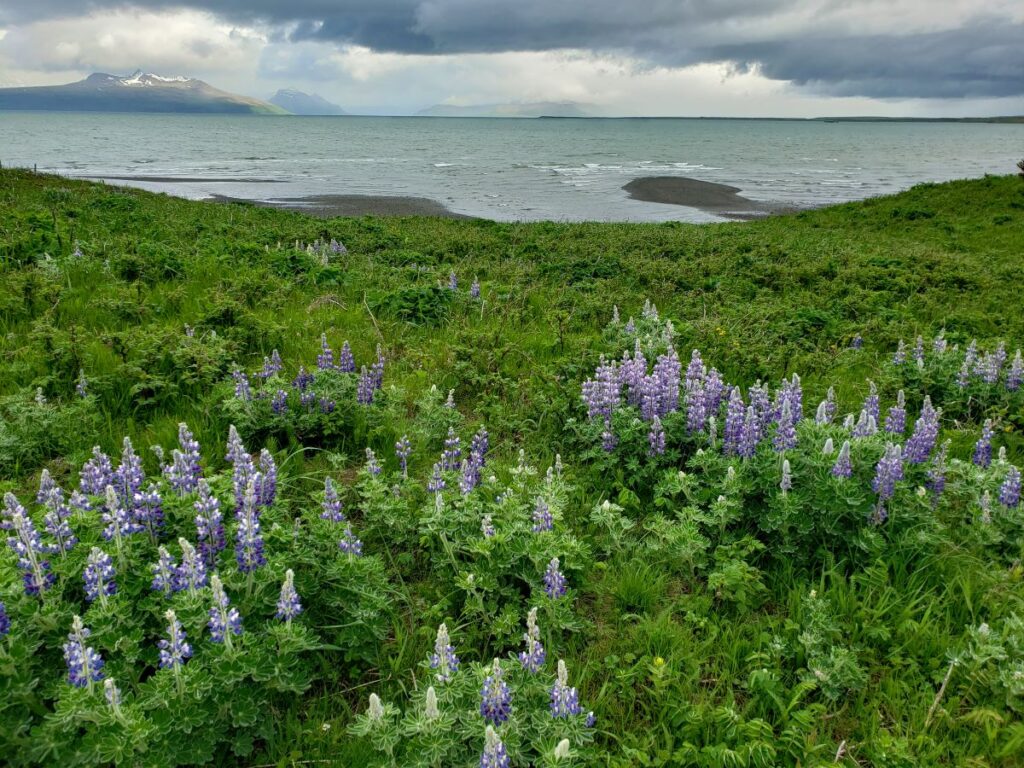
Food Security in the Aleutian Pribilof Island Region
In the Aleutian Pribilof Island region, the Unangax̂ (Native people of the Aleutian and Pribilof region) have gathered, hunted and fished for food for thousands of years. This is the traditional and most important way for Unangax̂ people to get local food. In addition to traditional ways of harvesting food, the Unangax̂ are also gardening, growing in greenhouses, farming, ranching and ocean farming (mariculture). Often the community or Tribe spearheads these projects. For instance, cattle, reindeer, sheep, horses and bison have been successfully raised in the region by different village corporations. These herds are used as a local source of food for the communities, while some are also an economic venture. Native plants can be cultivated to improve production as well. Lily Stamm, a local grower living in Nikolski, said her community can go for weeks without a grocery delivery due to weather delays. When produce does arrive, it is often spoiled and expensive. Local food production is a tool to promote food security in the region and to complement traditional ways of harvesting food.
Weather
Temperatures in the Aleutian and Pribilof Islands range between the mid 30s to high 50s in the summer. In the winter, temperatures are relatively mild and can hover close to freezing for much of the winter, making greenhouse growing feasible for an extended period of time.
There are very few sunny days in much of the region. Michael Livingston remembered, “the sun shone rarely when we were kids growing up in Cold Bay, and — when it did — we wondered what sin we had committed to have that bright celestial body in the sky shining upon us.” This was a number of years ago and the sun shines more now than it did then, but still rarely. This slows ripening in crops like tomatoes, strawberries and raspberries.
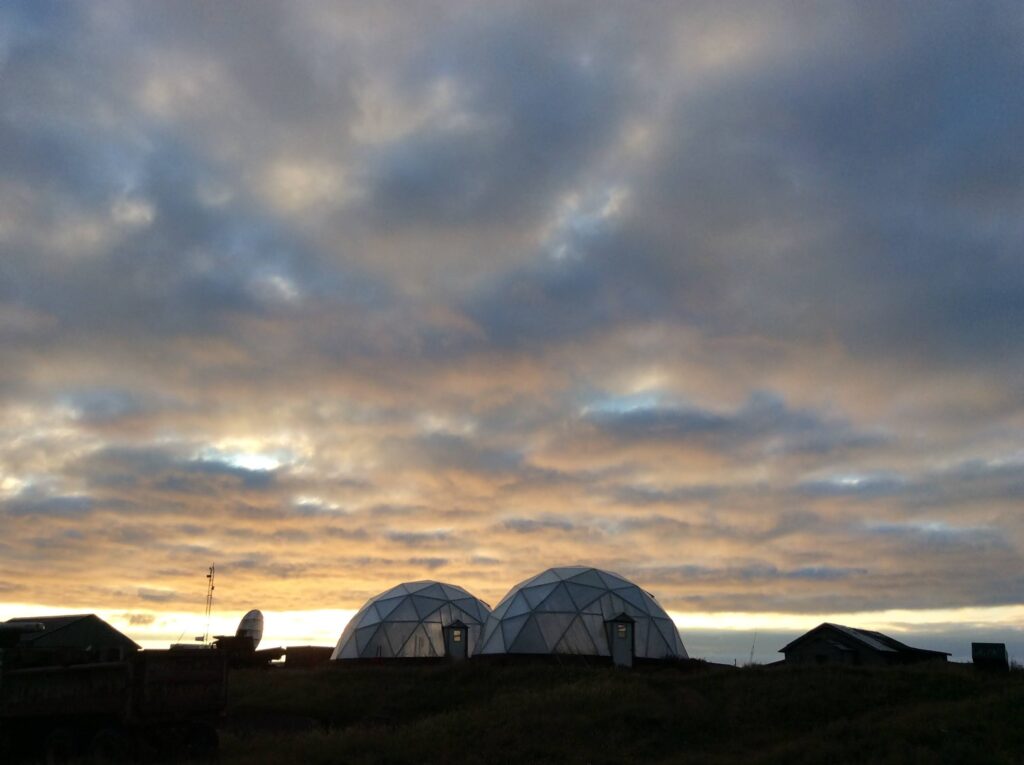
Strong and persistent winds pose a major challenge for growing crops outdoors and also for what types of structures can withstand the winds. Geodesic dome greenhouses have worked well in Nikolski, a particularly windy location in the region. Lily said that on a typical day, wind speeds are 25-30 mph, while during an actual storm, wind speeds range from 45 to 100 mph. The outdoor growing season in the region starts in May and lasts until October or November. In the greenhouse, the growing season can potentially last all year depending on the season.
The Alaska Garden Helper gives communities in the region an overview of the expected length of the growing season (when temperatures are above 32 degrees F, as well as the minimum temperature overview. It also gives projections in the coming years, based on climate change models. The USDA hardiness zones can be helpful in determining which perennials may survive.
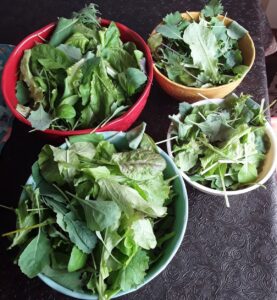
Soil
Good soil can be difficult to find in the Aleutian Pribilof Island region. Food scraps, manure, seaweed, and fish waste can all be composted. Compost is an excellent way to keep these items out of the dump and put it to good use.
What to Grow in a Garden
Certain vegetables and crops can be grown outdoors in the region while others must be grown in a greenhouse. Cool season crops that mature quickly are ideal. For longer season crops such as cabbage, look for varieties that mature in fewer days. Little research has been done on which varieties do best in the region. Keeping good records will help identify which varieties do grow best. You can share which varieties grow best and keep garden records here, http://growandtell.us/, which is also available as a mobile app. Here are some examples of crops that will grow well in the region in an outdoor garden.
Vegetables
Baby salad greens
Beets
Bok Choy/Chinese cabbage
Broccoli
Cabbage
Carrots
Cauliflower
Herbs
Kale
Lettuce
Potatoes
Radishes
Spinach
Swiss chard
Turnips
Flowers
Borage
Calendula
Marigolds
Nasturtiums
Pansies
Poppies
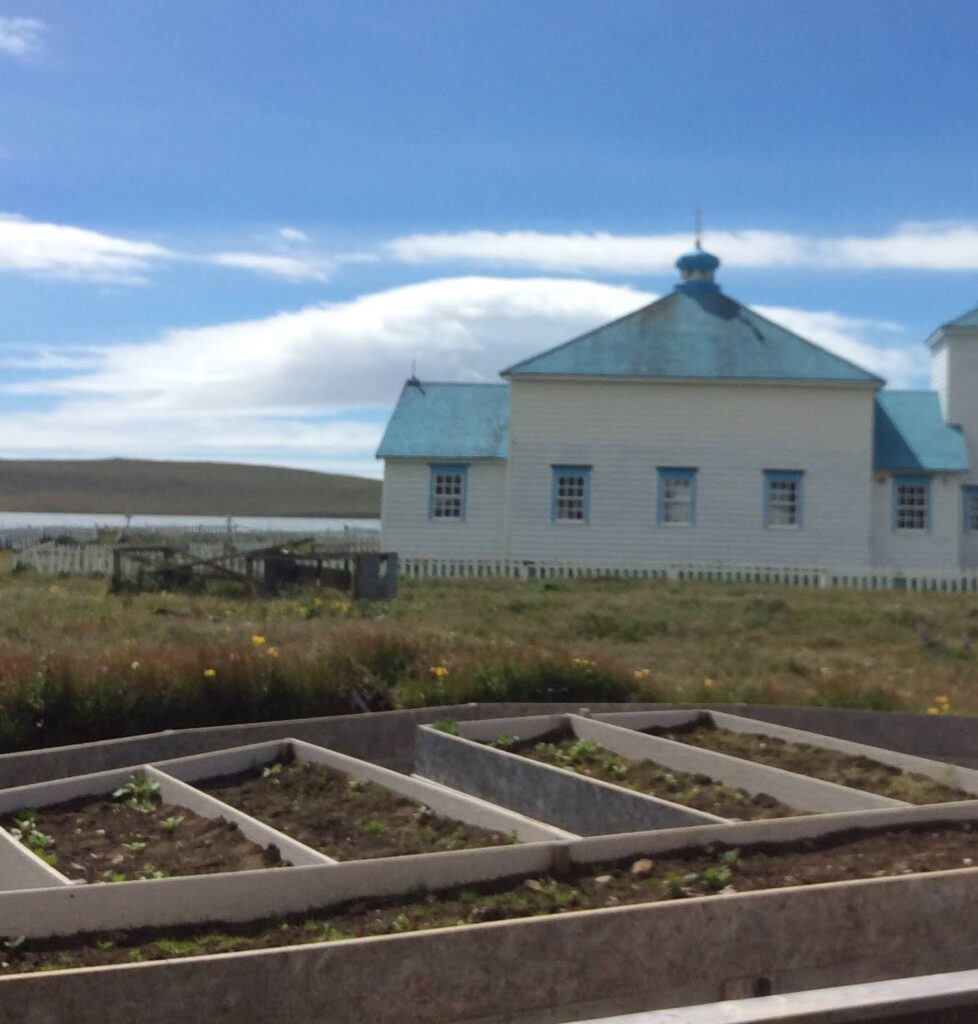
Greenhouse Structures
Nikolski has been using geodesic dome greenhouses since 2003. In this community, they had two geodesic dome greenhouses that were about 50 feet in diameter and provided 2,000 square feet of growing space. Unfortunately, during a storm with 130 mph winds, they lost one of their greenhouses because a joint in one of the triangular panels came loose and the wind got in. Lily said it was challenging to grow in a circular space. She uses grow bags to optimize the space and to be able to move things around.
There are several styles of greenhouses or indoor gardening strategies may work well in the region:
Geodesic domes
Passive solar greenhouse built into the ground
Biomass-heated greenhouses
A fully contained Atco unit hydroponic growing system
Indoor home, community or school hydroponic systems
What to Grow in a Greenhouse
Greenhouses make it possible to grow many crops that would otherwise not withstand the wind and outdoor temperatures in the region. However, growing crops in a greenhouse does require extra management. It’s important to make sure the temperatures do not get too hot or cold and to provide adequate ventilation. Warm season crops that require more days to mature can be grown in greenhouses. In addition to the crops that grow well outdoors in the region, the following crops can be successfully grown in a greenhouse:
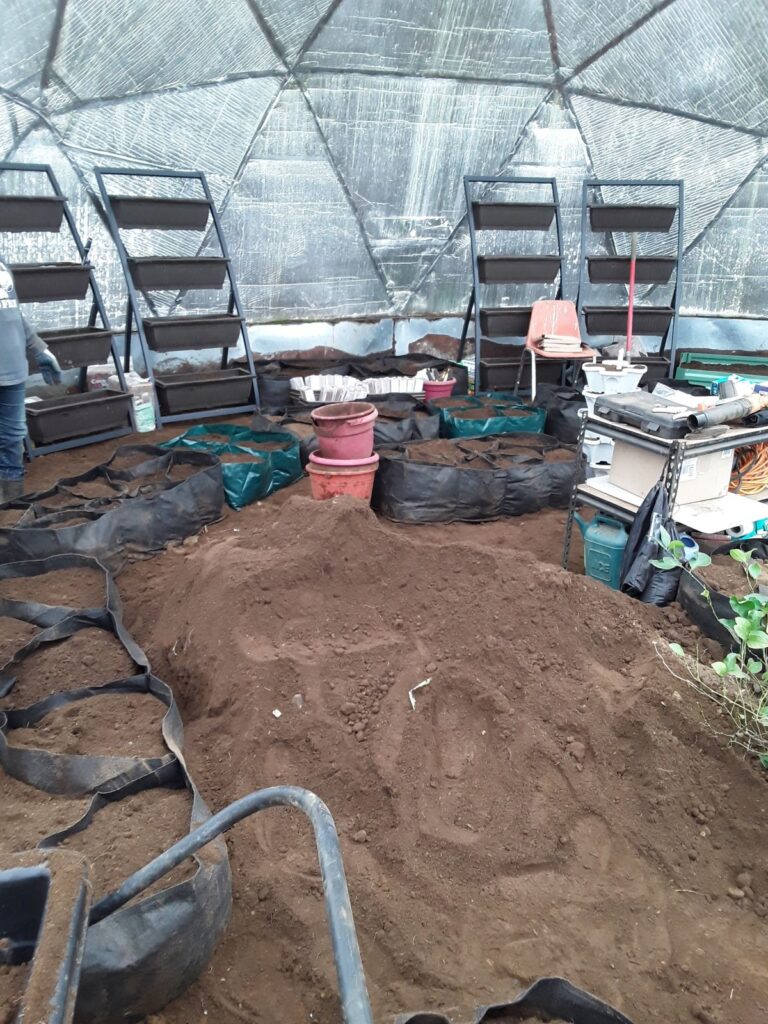
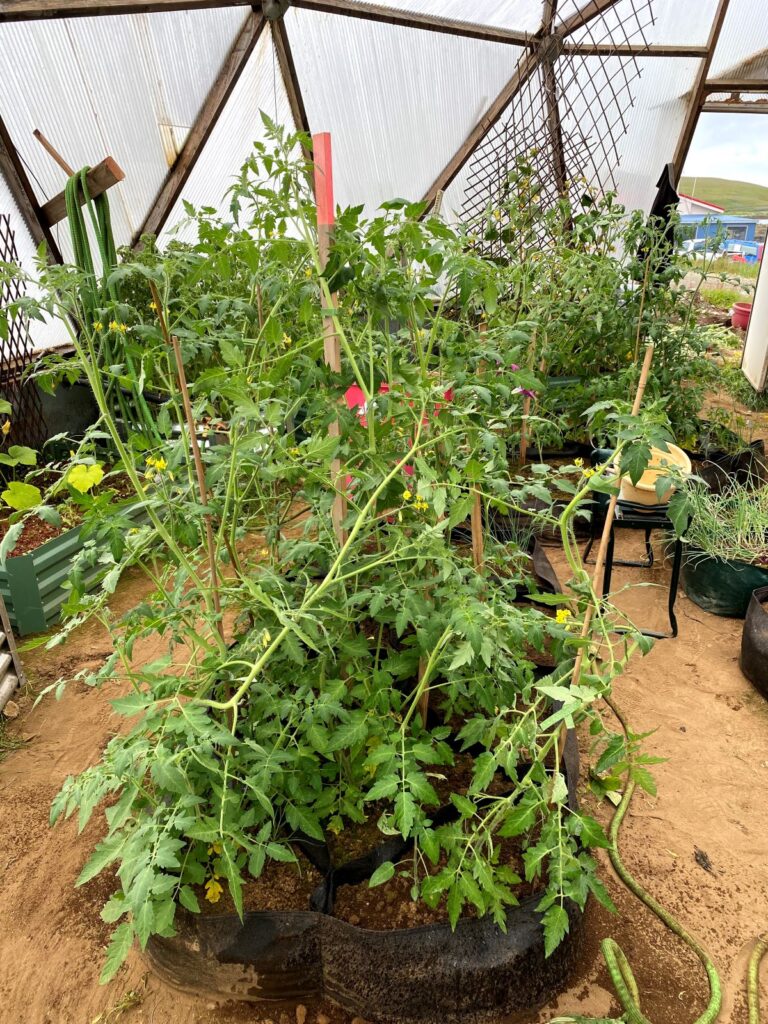
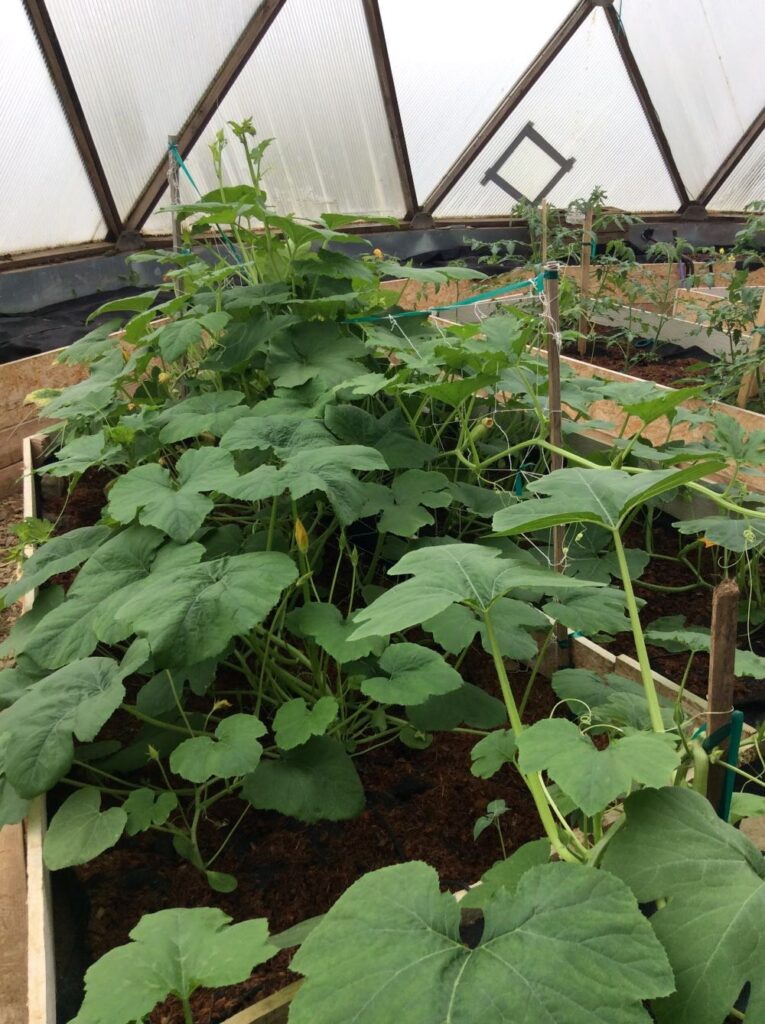
Grow in a Greenhouse
Basil
Beans
Cucumbers
Strawberries
Squash (zucchini & pumpkins)
Tomatoes
Pests
In Nikolski, aphids (in the greenhouse), lemmings and cattle were some of the biggest pests. Rotating crops, good ventilation, and sanitary practices can help limit pests and diseases in a greenhouse. Encouraging beneficial insects in the garden and greenhouse can also help control pests.
Gardening or growing in a greenhouse in the Aleutian Pribilof Island region poses a lot of challenges! But with the right tools, crops, and know-how, it can be done and offers the reward of having fresh produce out your doorstep.
For information on gardening and food preservation in Alaska, go to the UAF Cooperative Extension website and for questions about gardening, ask an expert.
Here are some videos for helping you get started in growing your garden:
Getting Started in Your Garden
What Grows Where You Live in Alaska?
How to Choose Varieties to Grow
And more videos in the series In the Alaska Garden with Heidi Rader
This article was a partnership between UAF Cooperative Extension Service, the Aleutian Pribilof Island Association, and was supported by the Native American Agriculture fund.
